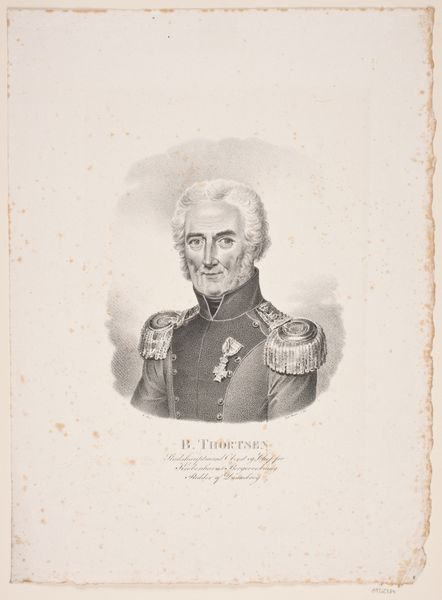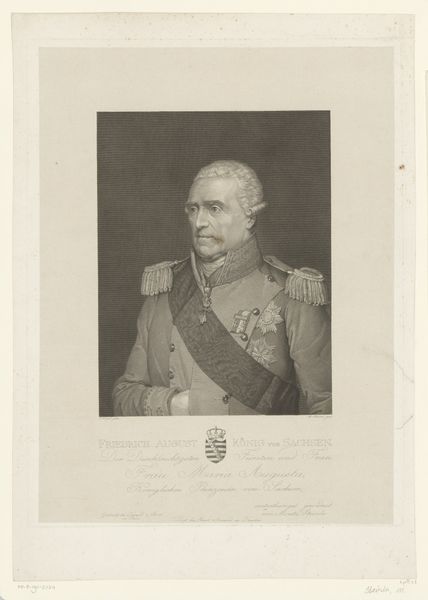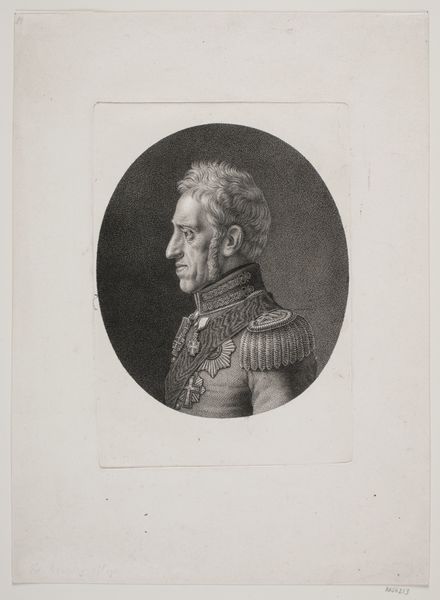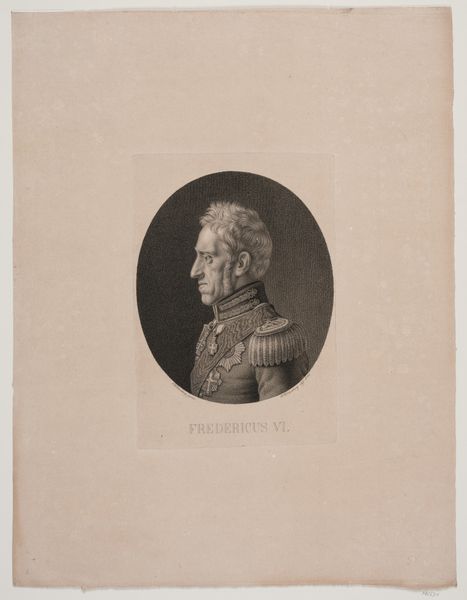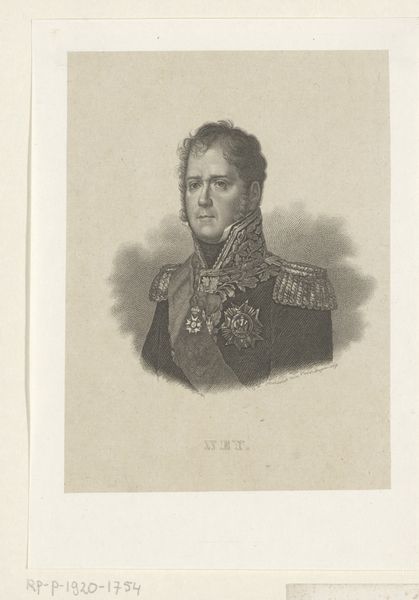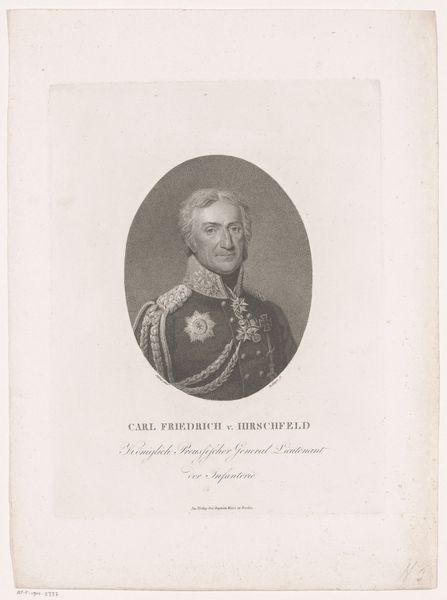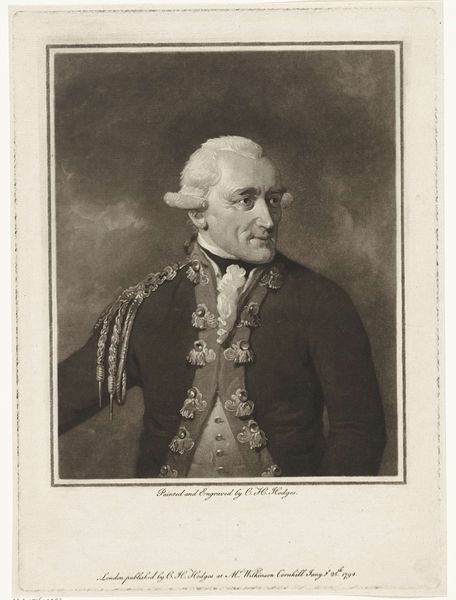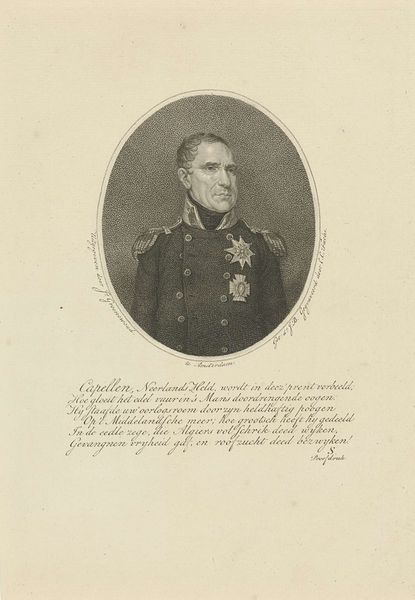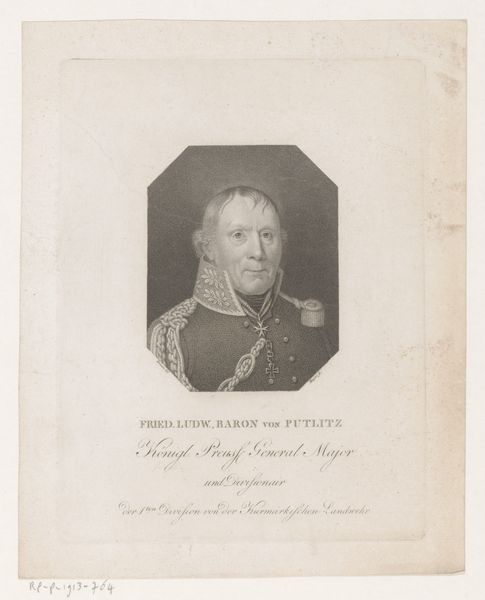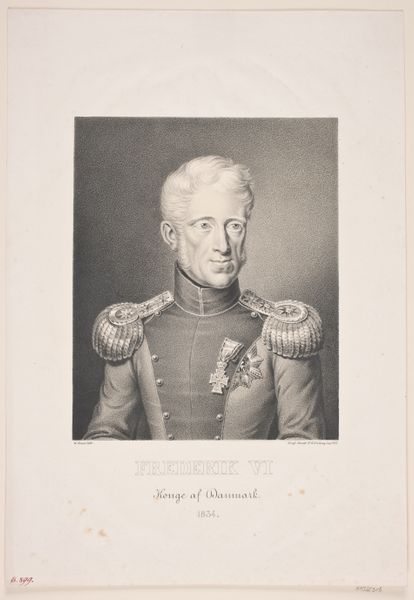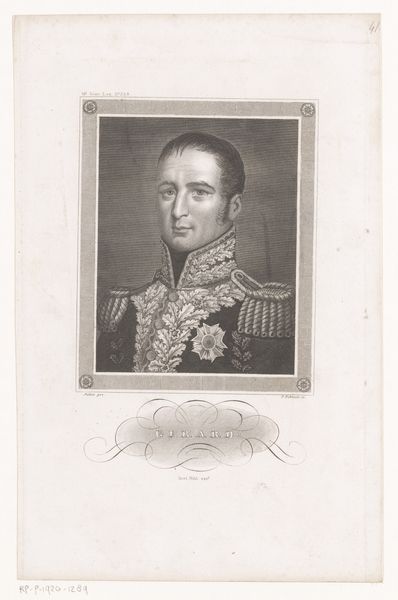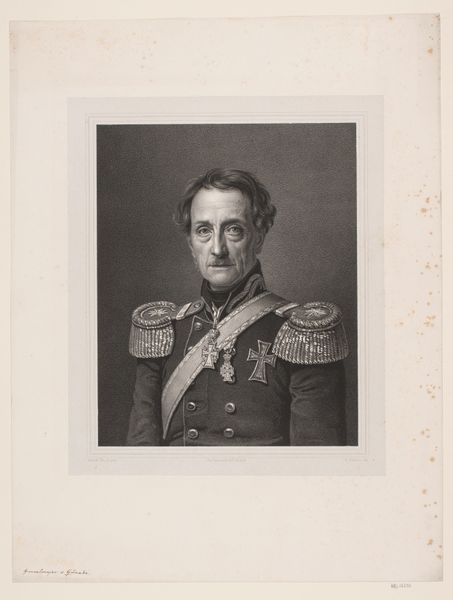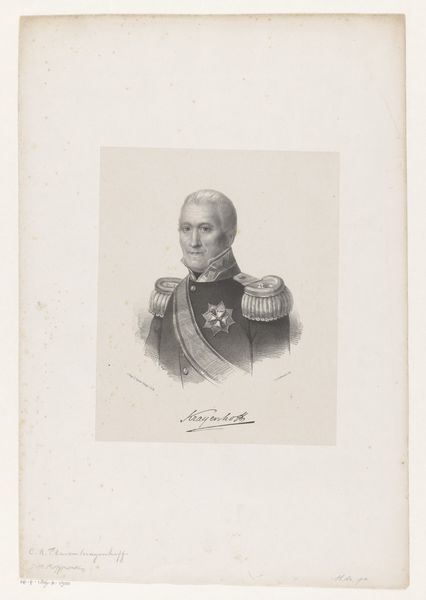
print, engraving
#
portrait
#
pencil drawn
#
neoclacissism
# print
#
pencil sketch
#
pencil work
#
history-painting
#
engraving
Dimensions: height 236 mm, width 200 mm
Copyright: Rijks Museum: Open Domain
Curator: Welcome. Here we have a printed portrait of Friedrich August of Saxony, likely created between 1792 and 1816, held within the Rijksmuseum's collection. Editor: The first thing that strikes me is the tonal range. It's almost monochromatic, yet there's a softness, an almost velvety quality to the shading that draws you in. Curator: Indeed. As an engraving, it relies entirely on line and tone to create form and depth. Notice how the engraver uses fine, closely spaced lines to build up darker areas and create a sense of volume in his face. Also observe his stern look! Editor: Right. But I’m also intrigued by the material context of something like this. Think about the labour involved: the artisan crafting the copper plate, the paper itself—its quality suggesting a certain level of wealth and privilege associated with both the sitter and the print's intended audience. This isn't a quick sketch; it is about social communication through reproduction. Curator: Agreed. Its meticulous detail elevates this reproduction. Look, the textures on his uniform, the glint of the medals—it conveys status, power, and all the neoclassical aspirations through its crisp execution. Editor: And the choice of engraving reinforces that. This technique, involving cutting into a metal plate, seems perfectly suited to reproducing the hard-edged, idealized forms characteristic of the era. Each impression signifies a tangible exchange and affirms identity of stature in society. Curator: Furthermore, notice how the print medium itself facilitates dissemination. It makes this image widely accessible, extending the reach and impact of its political messaging far beyond the court circle. Its precision mimics truth, lending him a stoic timelessness beyond paint's ability to conceal. Editor: Precisely. It’s about creating and distributing an image—of authority. We see in every impression traces of work, distribution, access... revealing far more than simply the likeness of the sitter. Curator: Well said. This exploration unveils how artistry and craft coalesce to form a narrative—or perhaps better stated, to engrave an idea of power—into the fabric of history. Editor: Right, the print transforms our engagement with the persona it tries to represent into something tangible: the confluence of image, process, material. It becomes, in itself, history incarnate.
Comments
No comments
Be the first to comment and join the conversation on the ultimate creative platform.
